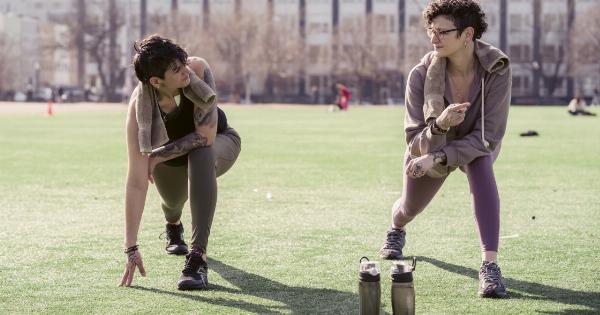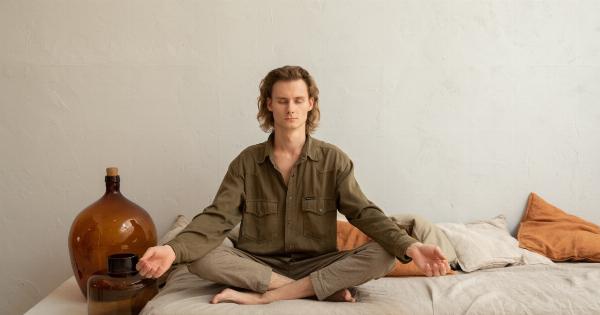Are you having trouble falling asleep at night? Do you find yourself tossing and turning, unable to get comfortable or relax enough to drift off? Insomnia can be a frustrating and exhausting condition, but the good news is that there are some simple techniques you can try to help improve your sleep quality. Here are two strategies to consider:.
1. Deep Breathing
One of the most effective ways to calm your mind and body and prepare for sleep is through deep breathing exercises.
By slowing and regulating your breathing, you can reduce your heart rate and blood pressure, relax tense muscles, and quiet your racing thoughts. Here’s how to get started:.
- Find a quiet, dark, and comfortable place to lie down.
- Breathe in deeply through your nose, filling your lungs completely with air.
- Hold your breath for a few seconds, then exhale slowly through your mouth, pushing out all the air.
- Repeat this process for a few minutes, focusing on the sensation of your breath moving in and out of your body.
- If you find it difficult to concentrate, try counting each inhale and exhale, up to a count of ten, before starting over.
You may find that you’re able to relax more deeply with each few breaths, and that you feel more calm and centered overall.
This technique can be especially useful if you’re dealing with stress, anxiety, or racing thoughts that are keeping you awake at night.
2. Progressive Muscle Relaxation
Another helpful approach to sleeplessness is progressive muscle relaxation. This technique involves consciously tensing and then releasing each major muscle group in your body, one at a time, until you feel deeply relaxed and ready for sleep.
Here’s how to do it:.
- Find a comfortable and quiet place to sit, lie down, or recline.
- Starting at your toes, tense the muscles in your feet and hold for a few seconds.
- Release the tension, feeling the sensation of relaxation and openness in your feet.
- Move up to your calves, tensing and releasing the muscles there.
- Repeat this process for your thighs, hips, belly, chest, back, shoulders, arms, hands, neck, and face, taking your time with each muscle group and focusing on the sensations of tension and relaxation.
As you move through this process, you may find that your body becomes more and more relaxed, and that you’re able to release tension and stress that you didn’t even realize you were holding.
This can be a powerful tool for reducing anxiety, easing physical discomfort, and promoting sleep.
Conclusion
If you’re struggling to sleep and looking for ways to improve your restfulness and quality of sleep, deep breathing and progressive muscle relaxation can be excellent techniques to try.
Experiment with each approach to see which works best for you, and make time each evening to practice and cultivate this valuable skill. Whether you’re dealing with insomnia, stress, or physical discomfort, these techniques can help you relax deeply and prepare for a peaceful night’s rest.





























